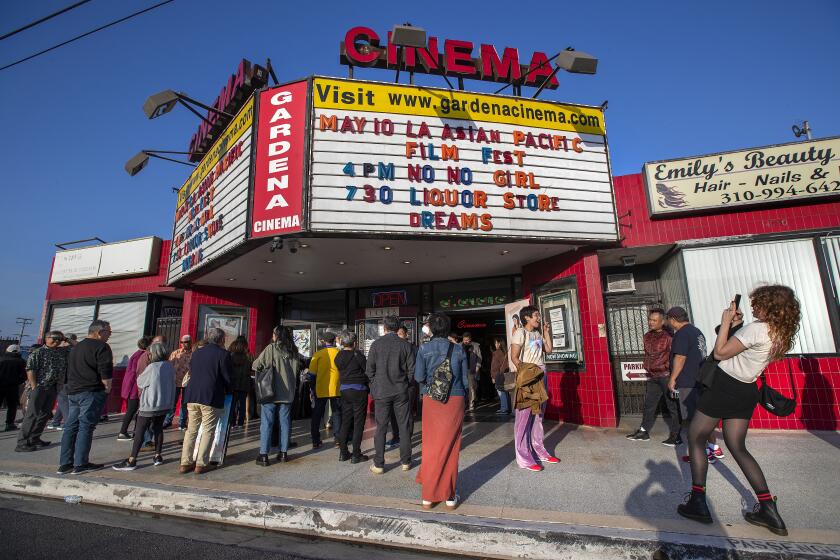At a Gardena shop, brothers labor to create mochi that reminds people of home
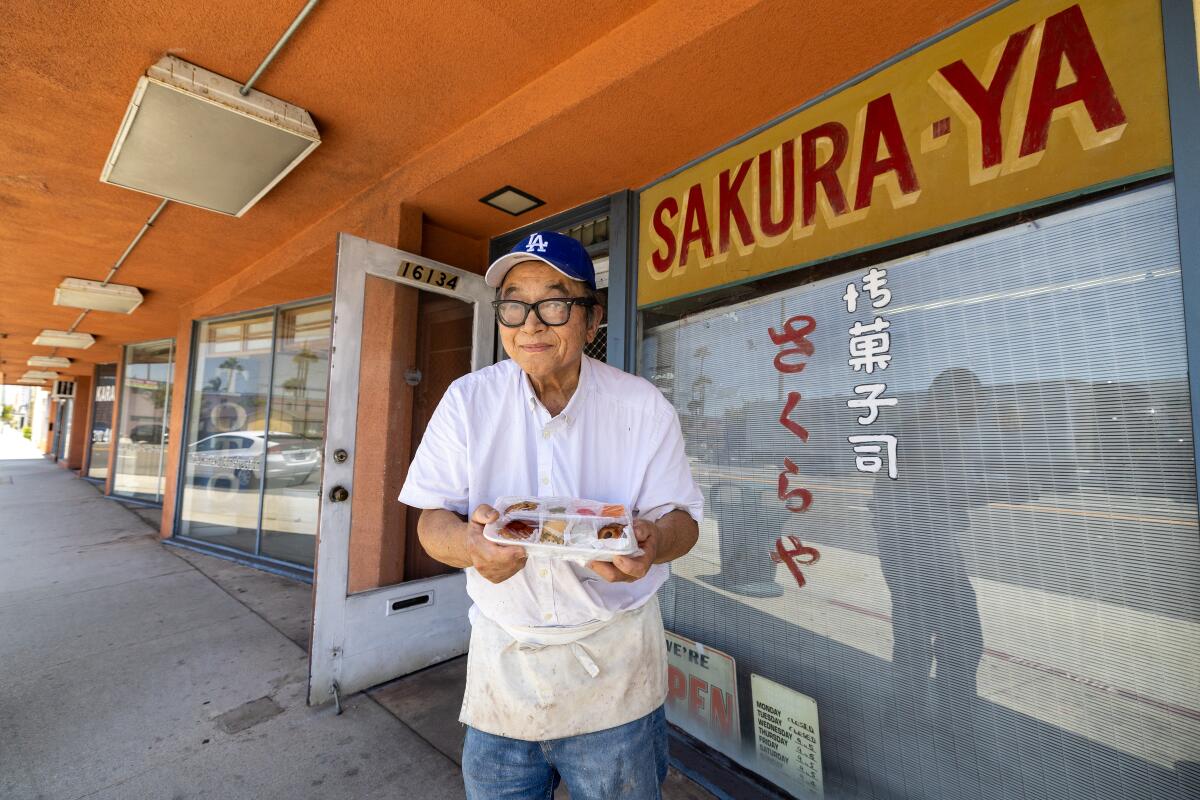
- Share via
Sakuraya is just a mochi shop in Gardena, if you listen to owners Mas and Yuki Fujita tell it.
They don’t do anything that different from any of the other shops, insists Mas, 74. There’s no special sauce or secret ingredient hidden in the kitchen of the tiny, one-room storefront where the rice cakes and filling are made. There’s no master text of Japanese confectionery they consult to create their manju. Since 1960, the brothers have done what their father, Masayasu, taught them and nothing more.
But Sakuraya is special, if you listen to longtime Gardena residents such as Stony Furutani. For 64 years, Sakuraya’s sweets have been a main draw at weddings, funerals and baby showers, a flavor that marks moments as worth remembering. Getting mochi or the wheat flour-based variant manju is one thing, but going to Sakuraya is a way to show another level of care, Furutani said.
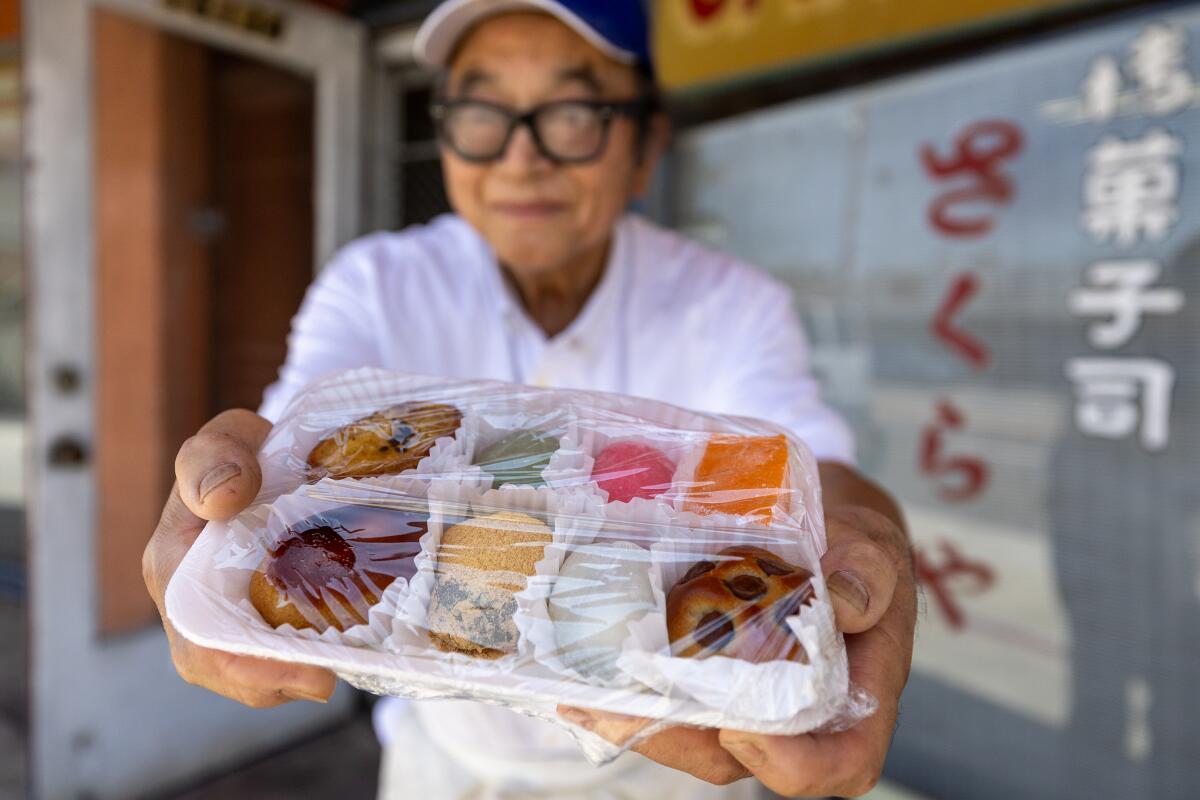
“To me, it’s a taste of home. It’s tradition. It’s culture. The fact that you went to that little shop, talked to Mas, it shows extra effort,” said Furutani, who created a short film about the shop for a class.
“It’s definitely the thing you want to bring to the potluck,” said Emily Furutani, his daughter. “The care and attention they bring to mochi and manju, there’s really just a handful of places like that these days.”
Sakuraya is the only business that sees foot traffic in its low-slung strip mall in a quiet part of town. The windows are covered, and if the door wasn’t open, the place would look as if it’s been closed for decades. Inside, figurines of woodland animals sit on shelves that once held locally made Japanese rice crackers for sale (the company closed decades ago). A small glass display case holds the mochi and manju, with all of the signs and prices handwritten in black marker.
The single-screen Gardena Cinema hasn’t changed much since the Kim family bought it in 1976. When the owners met hard times, the community responded to their call.
There’s never a line, but they almost always sell out. They’ve never done advertising, not even the free kind. They even turned down a spot on Huell Howser’s television show, “California’s Gold,” a few decades ago. More attention means more customers, which means more work, and more strain on Mas’ back and Yuki’s hip.
Sakuraya’s sweets have a soft, velvety texture with mellow, sweet bean fillings. Each piece is neatly rounded but slightly irregular, and no two are the same. Mas makes all of the shop’s mochi and bean mixtures by hand — on the busiest days, he might start at 4 a.m. and make a thousand pieces in a shift. It’s the beans that take the most time, simmering for hours, then taking even longer to cool.
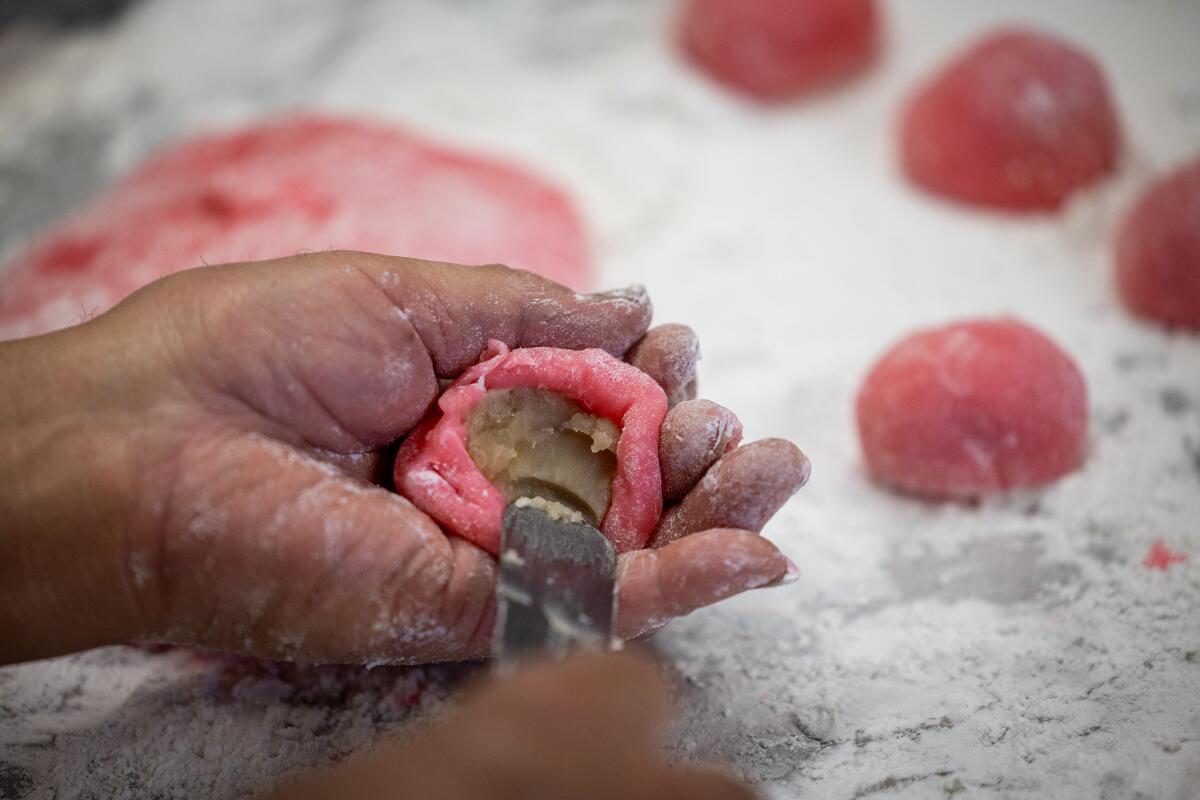
Mochi is often made by pounding rice, which creates pastries that harden after a day or so. But Sakuraya uses a mixture of rice flours and other starches to create a rice cake that yields easily to a bite. The resulting mochi retains its soft texture for days, which suits their customers, who often take them on long plane trips as gifts for family out of town.
The brothers’ one departure from tradition is their own version of maruyaki, a baked bun with red bean filling that’s typically studded with peanuts. Yuki, who handles the baking, replaced the peanuts with chocolate chips, to better cater to sugar-loving American palates.
Last weekend, at a festival fundraiser organized by the Gardena Valley Japanese Cultural Institute, everyone I spoke seemed to have sentimental memories of Sakuraya.
An L.A. shop has made mochi for 99 years, but times and tastes have changed.
I polled folks at the bingo tables, the beer garden and the lunch tables, and the consensus favorite was the pink lima bean mochi.
Alvin Takamori, a designer running the cash register for the plant sale, remembers Sakuraya as a special treat eaten with family. But as the youngest boy in the family, he always seemed to miss out on the pink ones. Now he’s 62 and delights in buying as many pink mochi as he wants.
Sakuraya is a traditional manju shop, but authentic isn’t really what they’re going for. The last time Mas went to Japan was in the 1980s, and he’s not sure what techniques are popular there at the moment. Mas and Yuki use the same tools, techniques and ingredients their father used. The main goal is for their sweets to taste like their customers’ memories.
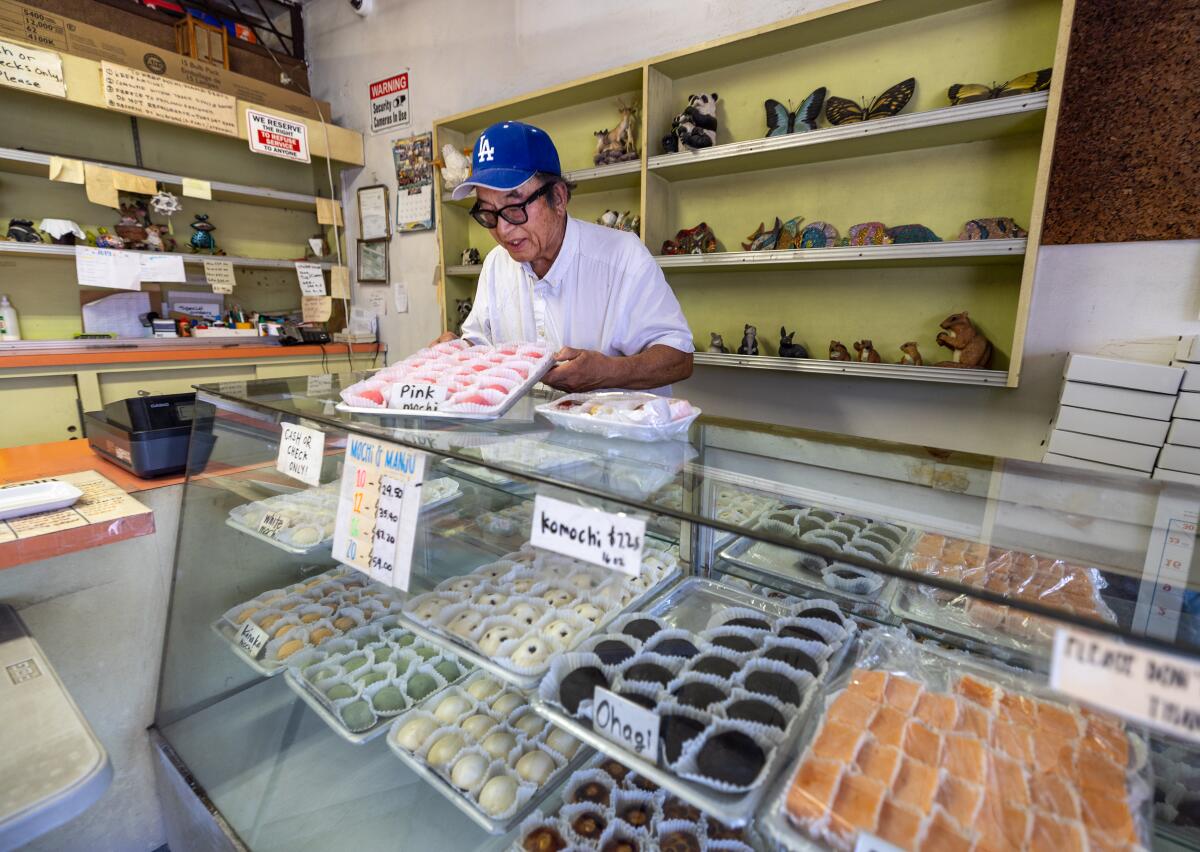
We might never see places like Sakuraya open in this city again, stubbornly human and low tech, made special through lavish investments of time and care. The economics of the strip mall are changing too fast for a business funded by a single person or family’s income. In a fiercely competitive market, there’s no room for the inefficiencies and the idiosyncrasies that create places like Sakuraya.
Japanese American family keeps up mochi making tradition
But that’s how their father taught them to do business, Mas said. Back in the 1950s, when Masayasu finished his training at a mochi shop in San José, he decided to move the family to Gardena so that the shop owner who trained him would not lose business.
Chikara Mochi, another venerable Gardena institution, is just down the street from Sakuraya. The Fujitas were close friends with the owners, Mas said, and they discussed how to avoid sapping the other‘s business.
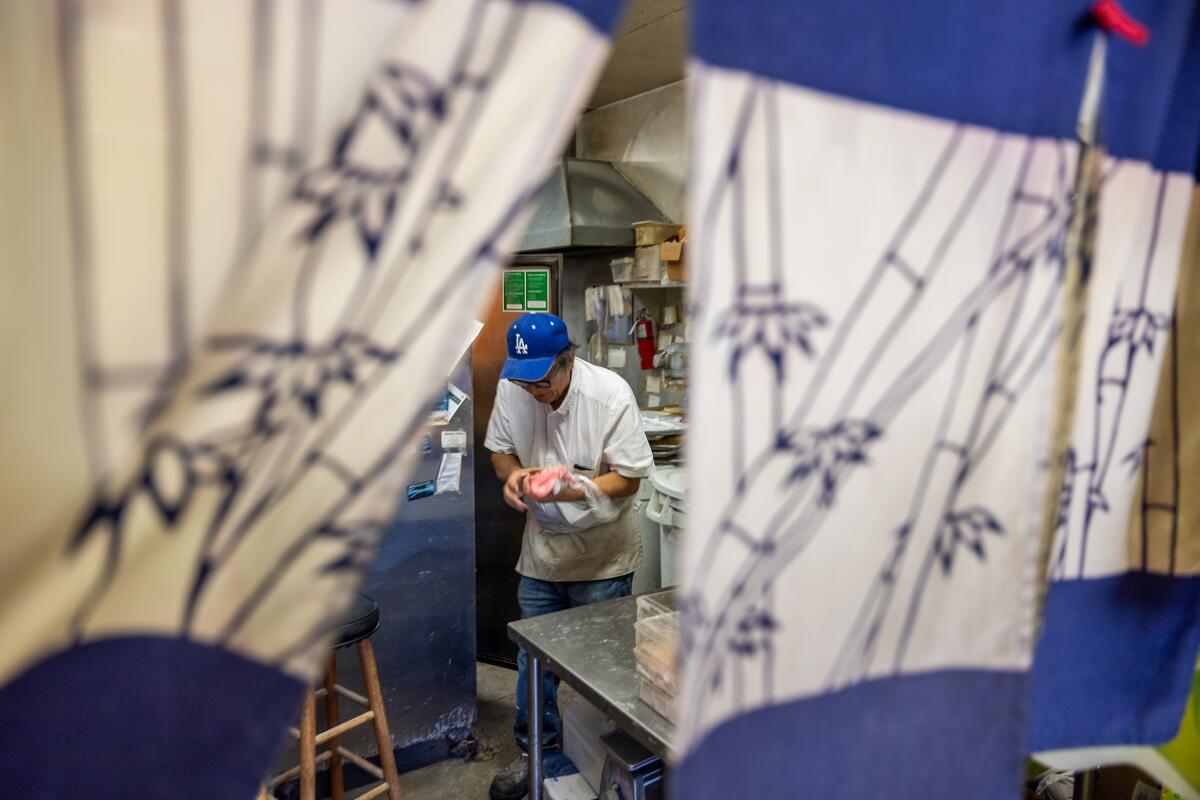
Mas has worked at the store ever since he graduated from college. Yuki joined after working as a police officer, limousine driver and manager for the U.S. Postal Service, looking for a better work-life balance.
Both brothers have lived in Gardena their entire lives. Neither has plans to quit or retire, but there is no succession plan. The goal was never to get rich, last forever or expand. Only to honor their father, a Hiroshima survivor and war prisoner who rebuilt his life in America.
And besides, if they closed, too many of their loyal customers would be disappointed.
So they’ll continue as long as their bodies last, quiet stewards of flavors forever associated with memories of happy childhoods in Gardena.
More to Read
Sign up for Essential California
The most important California stories and recommendations in your inbox every morning.
You may occasionally receive promotional content from the Los Angeles Times.
